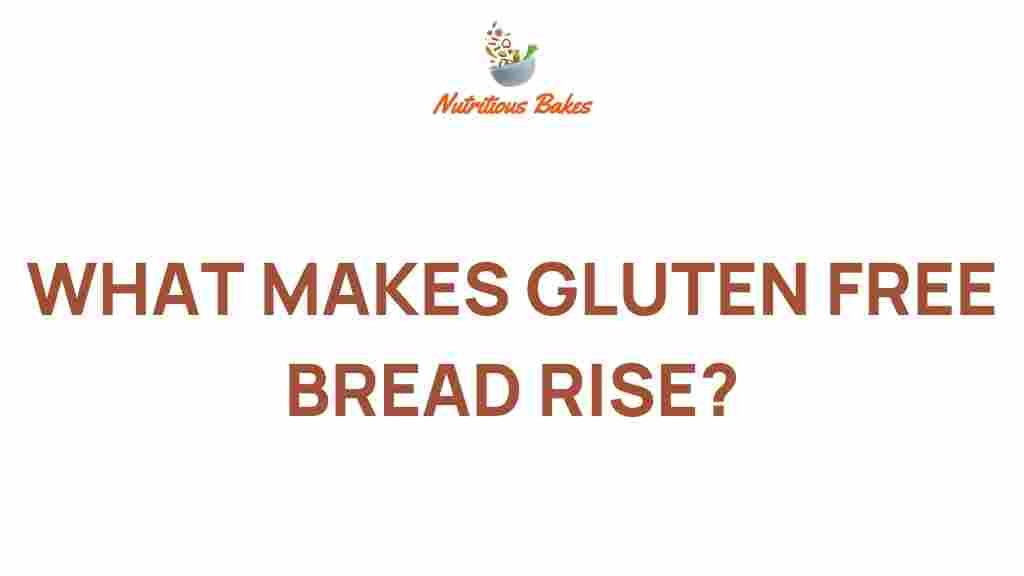The Science Behind Gluten-Free Bread: What Makes It Rise?
If you’ve ever tried baking gluten-free bread, you might have noticed that it behaves quite differently compared to traditional wheat bread. Gluten-free bread is a delightful alternative for those with gluten sensitivities or celiac disease, but understanding what makes it rise and achieve that perfect texture can be a challenge. In this article, we will explore the baking science behind gluten-free bread, focusing on the role of yeast, various rising agents, and the best gluten alternatives to create a superior bread texture. We will also share some recipe secrets and delve into the fascinating world of food chemistry.
The Importance of Gluten in Traditional Bread
Before we dive into gluten-free bread, it’s essential to understand the role of gluten in conventional bread-making. Gluten is a protein found in wheat and other grains, providing elasticity and strength to dough. This elasticity allows the dough to rise and hold its shape while trapping air bubbles formed during fermentation.
When you knead traditional bread, gluten strands develop, creating a network that gives bread its chewy texture. Without gluten, bread can become dense and crumbly. This is where gluten-free alternatives come into play, and understanding the science behind them is crucial for successful baking.
Understanding Gluten-Free Bread
Gluten-free bread substitutes gluten with various ingredients that mimic its properties. These include:
- Rice flour
- Almond flour
- Coconut flour
- Potato starch
- Tapioca flour
Each of these ingredients provides different textures and flavors, and they often need to be combined to achieve the desired results in gluten-free bread.
The Role of Yeast in Gluten-Free Bread
Yeast is a crucial component in bread-making, and its role is to ferment sugars, producing carbon dioxide gas. This gas is what causes the dough to rise, creating that airy structure typical of bread. In gluten-free bread, yeast remains just as important, but the absence of gluten means that additional considerations must be made.
When using yeast in gluten-free bread, consider the following:
- Proofing the yeast: Always proof your yeast in warm water with a bit of sugar to ensure it is active.
- Using the right type: Instant yeast or active dry yeast can be used, but be cautious with the amounts, as gluten-free flours can absorb more liquid.
- Temperature: The dough should be kept in a warm environment to promote yeast activity.
Rising Agents in Gluten-Free Bread
In addition to yeast, gluten-free bread recipes often incorporate other rising agents to enhance texture and rise:
- Baking powder: A combination of an acid and a base that produces carbon dioxide when moistened.
- Baking soda: Often used with acidic ingredients like yogurt or vinegar to create lift.
- Eggs: Provide structure and can help with rising when beaten.
Understanding how these rising agents interact with gluten-free flours is essential for creating a successful loaf.
Gluten Alternatives: Finding the Right Mix
To achieve the right texture in gluten-free bread, it’s often best to use a blend of different flours and starches. Here are some popular gluten alternatives:
- Brown rice flour: Adds a mild flavor and good structure.
- Oat flour: Provides a soft texture and sweetness.
- Chickpea flour: Adds protein and a nutty flavor.
- Psyllium husk: Mimics the binding properties of gluten.
Combining these flours can help you achieve a more balanced bread with the desired rise and texture.
Baking Science: The Chemistry Behind the Rise
The food chemistry of gluten-free bread is fascinating. When baking gluten-free bread, various chemical reactions occur:
- Fermentation: Yeast ferments sugars to produce carbon dioxide, which causes the dough to rise.
- Starch gelatinization: When heated, starches absorb water and swell, contributing to the bread’s structure.
- Protein coagulation: As bread bakes, proteins in eggs or flours solidify, adding to the final structure.
By understanding these processes, bakers can manipulate ingredients and techniques to create the best gluten-free bread possible.
Recipe Secrets for Perfect Gluten-Free Bread
Now that we’ve covered the science, let’s look at some recipe secrets to help you bake the perfect gluten-free bread:
- Hydration: Gluten-free flours often require more liquid. Start with a recipe and adjust as necessary.
- Resting time: Allowing the dough to rest can help with hydration and improve texture.
- Mix-ins: Consider adding seeds, nuts, or dried fruits for added flavor and texture.
- Temperature control: Keep your dough warm to encourage yeast activity during proofing.
Experimenting with these tips can lead to delicious results!
Troubleshooting Common Gluten-Free Bread Issues
Baking gluten-free bread can come with its challenges. Here are some common issues and their solutions:
- Dense bread: This can occur from not enough rising agents or insufficient yeast proofing. Ensure that your ingredients are fresh and active.
- Crumbly texture: Often due to insufficient moisture. Increase the liquid in your recipe.
- Flat loaves: Make sure the dough has enough time to rise and that it is kept in a warm environment.
- Dry bread: This may be from using too much flour. Measure your ingredients carefully and consider adding fats like oil or butter.
By following these troubleshooting tips, you can improve your gluten-free baking skills and achieve better results.
Conclusion
Baking gluten-free bread requires a good understanding of the baking science involved. By mastering the roles of yeast, rising agents, and various gluten alternatives, you can create delicious and satisfying loaves. Remember, experimenting with different ingredients and techniques is key to finding the perfect recipe for your taste.
For more information on gluten-free baking and to explore various recipes, check out this helpful resource.
Happy baking, and enjoy the delightful world of gluten-free bread!
This article is in the category Ingredients and created by NutritiousBakes Team
